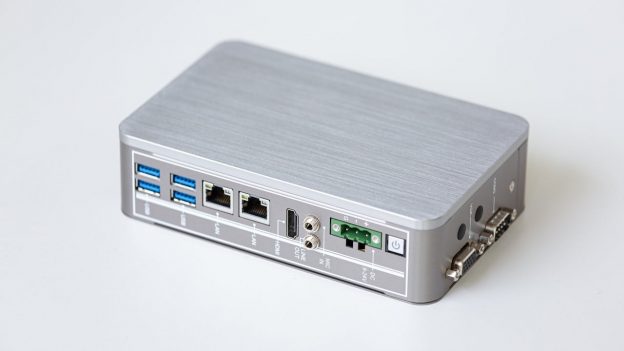Wi-Fi’s convenience has led to its widespread adoption in both personal and professional environments. This overview includes setting up, optimizing, and securing networks, alongside troubleshooting common issues.
Explore Wi-Fi’s future, including its role in advancing the Internet of Things (IoT), highlighting its ongoing importance in our digital lives.
The Basics of Wi-Fi
Wi-Fi is technology that enables electronic devices to connect to the internet wirelessly. It uses radio waves to transmit information, removing the need for wired connections.
Defining Wi-Fi
Wi-Fi, short for Wireless Fidelity, refers to a family of wireless network protocols, based on the IEEE 802.11 standard, which is used to provide network connectivity in a variety of settings.
It allows computers, smartphones, and other devices to communicate with one another and with the internet without physical wired connections. The term Wi-Fi suggests a form of seamless wireless connectivity.
History and Development
The development of Wi-Fi began in the 1990s, with contributions from organizations such as the CSIRO, which played a vital role in inventing a method for “un-smearing” radio waves that became a key part of wireless networking.
The brand name “Wi-Fi” was created by the marketing firm Interbrand. Over time, technological advancements have led to the evolution from the original IEEE 802.11 standard to subsequent versions, providing increased speed, range, and reliability.
How Wi-Fi Works
Wi-Fi works by using a router to send and receive radio waves to and from wireless devices, which include a wireless network adapter. The router is connected to the internet via a modem and often integrates the functions of both devices.
Wireless signals are broadcast to cover a certain area, enabling devices within that range to connect to the network and access the internet or other network resources.
| Component | Function |
| IEEE 802.11 | A set of standards for implementing wireless local area network computer communication. |
| Radio Waves | Used to transmit and receive data between devices and the router. |
| Router | Directs traffic on the network and connects to the modem to offer internet access to devices. |
| Modem | Establishes a connection to the internet service provider, bringing internet to the router. |
Discover the Freedom of No Contracts with VMedia’s Flexible Internet Plans. Click here to explore your options.
Wi-Fi Standards and Speeds
Understanding the evolution of Wi-Fi standards and their associated speeds is important for consumers and professionals as they navigate the various options available for wireless networking.
Overview of 802.11 Standards
The 802.11 standards are a set of protocols for wireless networking, developed by the Institute of Electrical and Electronics Engineers (IEEE).
These protocols are specified in amendments to the original IEEE 802.11 standard and are the basis for Wi-Fi technology, as certified by the Wi-Fi Alliance. The primary standards include:
- 802.11a: Launched in 1999, it operates in the 5 GHz band with a maximum speed of 54Mbps.
- 802.11b: Introduced in 1999, this standard operates on the 2.4 GHz band and offers speeds up to 11Mbps.
- 802.11g: It combines the benefits of both 802.11a and 802.11b, operating on the 2.4 GHz band with speeds up to 54Mbps, and was released in 2003.
- 802.11n (Wi-Fi 4): Introduced in 2009, this standard operates on both the 2.4 GHz and 5 GHz bands, with speeds up to 600Mbps thanks to multiple-input multiple-output (MIMO) technology.
- 802.11ac (Wi-Fi 5): Coming out in 2013, 802.11ac operates exclusively on the 5 GHz band and significantly increases speeds up to 1Gbps, implementing wider channel bandwidth.
- 802.11ax (Wi-Fi 6): The most recent and advanced, released in 2019, this standard not only increases speeds but also improves efficiency and supports a higher density of connected devices in high-traffic areas.
Understanding Wi-Fi Speeds
Speed in Wi-Fi terminology refers to the rate at which data is transferred between devices over a wireless network. It is measured in Megabits per second (Mbps) or Gigabits per second (Gbps).
Factors that influence these speeds include the Wi-Fi standard in use, the bandwidth of the channel, and the number of simultaneous connections.
For instance:
- Bandwidth: The term “bandwidth” in wireless networks usually relates to the channel width. Wider channels allow for faster data transmission.
- Actual throughput/speeds can vary from the theoretical maximums due to environmental factors, device capabilities, and network congestion.
- 802.11n devices might see speeds ranging from 150Mbps to 600Mbps, while 802.11ac devices typically achieve speeds from 433Mbps up to potentially 1Gbps.
- Possessing higher efficiency, 802.11ax is equipped to deliver more capacity, which translates not only to faster speeds potentially beyond 1Gbps but also to a more stable and consistent connection.
By understanding these Wi-Fi standards and the complexities of network speed, one can make informed decisions for specific networking needs – ensuring efficient and fast connectivity.
Related: How to Find Free WiFi Hotspots Easily
Setting Up a Wi-Fi Network
Establishing a Wi-Fi network involves selecting the appropriate equipment, configuring settings for optimal performance, and ensuring robust security measures are in place.
This process allows devices to connect wirelessly to the internet through a local network.
Installation and Configuration
To begin setting up a Wi-Fi network, first acquire a wireless router, a device that serves as the central hub for wireless communications.
Connect the router to the modem provided by the Internet Service Provider (ISP). Power on both devices and use a computer or smartphone to access the router’s configuration page, often through a web browser.
Here, set the SSID (Service Set Identifier), which is the network’s name, and select a password to secure the network.
- Ensure the firmware of the router is up to date for the best performance and security.
- Choose a channel with less interference from other networks to improve connectivity.
Optimizing Performance
Performance optimization is vital to maintain a reliable and fast Wi-Fi network. The placement of the router significantly affects the range and strength of the Wi-Fi signal.
Place the router in a central location and elevate it to spread the signal evenly.
To further enhance performance:
- Limit devices on the network that are heavy bandwidth consumers.
- If required, install additional access points to extend the coverage area.
Elevate Your Home Internet Experience with VMedia’s Unlimited High-Speed Options. Get started now by clicking here.
Network Security
Security is paramount in protecting the network from unauthorized access and threats.
- Encryption: Use WPA2 or better yet, WPA3 encryption to secure the network.
- Password: Create a strong, unique password and change it regularly.
- Firewall: Ensure the router’s built-in firewall is enabled.
- Updates: Regularly check for and install firmware updates from the router manufacturer to protect against security vulnerabilities.
- Regularly monitor connected devices and consider creating a guest network for visitors.
By adhering to these steps, the Wi-Fi network should be stable, efficient, and secure, providing reliable internet access for all connected devices.
Related: Home Network Setup: Guide to Setup WiFi, Router, and More

Devices and Usage
Wi-Fi technology has become integral in connecting a wide array of devices to the internet, enabling a diverse range of applications in both personal and professional settings.
Compatible Devices
The ecosystem of Wi-Fi compatible devices includes, but is not limited to:
- Computers: Both laptops and desktops use Wi-Fi to connect to local area networks and the internet.
- Mobile Devices: Smartphones and tablets rely on Wi-Fi for internet access, often switching between cellular data and Wi-Fi connectivity.
- Home Devices: Smart TVs, gaming consoles, and home automation equipment such as smart thermostats and security cameras.
- Business Equipment: Printers, scanners, and point of sale (POS) systems commonly connect to Wi-Fi networks to enhance business operations.
Applications of Wi-Fi
Wi-Fi networks facilitate various applications:
- Home and Office: They allow devices to access the internet, stream content, and communicate within the network.
- Public Access: Businesses and city centers often offer public Wi-Fi networks, granting visitors internet access.
- Mobile Connectivity: As users move between locations, devices switch between Wi-Fi networks to maintain internet access without interruption.
Related: Internet for Apartment: Get WiFi at Home
Advanced Wi-Fi Features
Advanced Wi-Fi features have elevated the capabilities of wireless networking technology, ensuring faster speeds, increased range, and better performance across a multitude of devices.
The evolution of Wi-Fi technology, like Mesh WiFi, and the adaption of multiple frequency bands play pivotal roles in enhancing user experience.
Wi-Fi Technology Innovations
With each leap in wireless technology, from Wi-Fi 5 to the emerging Wi-Fi 7, Wireless Technology has seen substantial enhancements in performance metrics.
Modern advancements facilitate increased connection stability, wider coverage, and the ability to handle more devices concurrently. Wi-Fi Certified devices ensure that new innovations are compatible and follow the latest security and performance standards.
- Wi-Fi 6 (802.11ax): Introduces features like OFDMA and MU-MIMO, offering improved efficiency especially in crowded networks.
- Wi-Fi 6E: Extends Wi-Fi 6 capabilities into the 6 GHz band, providing more bandwidth and less interference.
- Wi-Fi 7 (802.11be): Expected to further bolster wireless communication with higher throughput and support for 320 MHz channels.
Dual-Band and Tri-Band Networks
Dual-band and tri-band networks leverage the use of multiple frequencies to offer a more flexible and optimized wireless networking experience. They operate using 2.4 GHz and 5 GHz bands, with tri-band systems adding an additional 5 GHz band.
- Dual-Band Networks:
- 2.4 GHz: Offers broader coverage with better wall penetration but at lower speeds.
- 5 GHz: Provides faster data rates with less interference but has shorter range.
- Tri-Band Networks:
- Combine one 2.4 GHz band with two 5 GHz bands for dedicated traffic routing, improving overall network efficiency especially in environments with multiple devices.
Both dual-band and tri-band networks have become integral for optimal performance in modern Wireless Networking Technology, accommodating diverse usage scenarios from simple web browsing to bandwidth-intensive activities like 4K streaming and online gaming.
They also play a role in facilitating 5G Home Internet services by providing a reliable and fast wireless connection within the home.
Maximize Your Savings with High-Speed Internet from VMedia. Find your perfect plan by clicking here.
Troubleshooting and Maintenance
Users should regularly assess their network’s wireless signal and coverage, and take steps to mitigate interference.
Common Wi-Fi Issues
There are a range of common Wi-Fi issues that can impede internet connectivity and affect performance.
They may include but are not limited to:
- Signal strength: Weak wireless signals can result from too much distance between the device and the router or due to physical obstructions.
- Interference: Other electronics, thick walls, and even microwaves can cause signal disruption.
- Network overload: Too many devices connected to the network can slow down performance.
To diagnose these issues:
- Check router placement: Ensure the router is centrally located and elevated off the floor to enhance coverage.
- Reduce interference: Move the router away from large metal objects, microwaves, and cordless phones.
- Limit connected devices: Disconnect unused devices to reduce network load.
Maintaining Wi-Fi Performance
Maintaining peak Wi-Fi performance requires regular updates and consideration of the following:
- Firmware updates: Router manufacturers release firmware updates to improve functionality and address security vulnerabilities.
- Router capacity: Ensuring the router can handle the number of devices and the bandwidth required for optimal operation.
- Network tools: Utilize built-in network tools to analyze Wi-Fi channels and select the one with the least congestion.
Maintenance tips include:
- Regularly update firmware: Check the manufacturer’s website for updates to keep the router secure and efficient.
- Monitor network traffic: Use apps or onboard tools to monitor which devices use the most bandwidth and adjust usage accordingly.
- Assess router capability: Upgrade the router if it no longer meets performance needs, considering factors like coverage area and maximum throughput.
Related: How to Login to Your Router and Change Wi-Fi Settings
The Future of Wi-Fi
The progression of Wi-Fi technology continually shapes the way individuals and devices connect to the Internet, with advances that promise faster speeds, improved reliability, and greater capacity to support a burgeoning array of smart devices.
Emerging Wi-Fi Technologies
Wi-Fi 7, technically known as IEEE 802.11be Extremely High Throughput (EHT), represents the cutting edge of wireless networking. Designated to operate across 2.4 GHz, 5 GHz, and 6 GHz frequency bands, this new standard aims to deliver a significant boost in performance.
Key features include:
- 320 MHz ultra-wide bandwidth: Enhances data throughout significantly compared to previous standards.
- 4096-QAM: Quadruples the modulation scheme, facilitating higher data rates.
- Multi-RU (Resource Unit): Allocates spectrum resources more efficiently.
- Multi-Link Operation: Allows devices to transmit data over multiple bands simultaneously.
Implementation of this technology is anticipated to markedly increase network performance, scaling up to potential speeds of up to 30 Gbps.
Wi-Fi and the Internet of Things (IoT)
As smart home devices proliferate, their dependence on a reliable Wi-Fi network underscores the need for upgraded Wireless LAN infrastructures.
Wi-Fi’s evolution is pivotal to the expansion of the Internet of Things, allowing for more devices to connect seamlessly and operate with low latency.
Wi-Fi’s role involves:
- Enabling a multitude of devices, from smart home appliances to IoT sensors, to connect and communicate over a Wireless Local Area Network (WLAN).
- Coexisting with cellular networks to provide comprehensive coverage and connectivity options for IoT deployments.
- Providing a seamless, user-friendly experience where the network name becomes a simple gateway to an intricate mesh of interconnected devices.
The robustness of future Wi-Fi standards promises to support a higher density of devices while maintaining optimal performance, thus becoming a backbone for smart ecosystems.

VMedia empowers users to maximize their Wi-Fi connectivity
As Wi-Fi technology advances, ensuring you have a robust and reliable internet service like VMedia becomes crucial for harnessing the full potential of your wireless network.
VMedia’s flexible internet plans cater to the demands of modern Wi-Fi standards, supporting everything from high-speed streaming to the seamless operation of smart home devices.
With Our commitment to offering no-contract, high-speed internet options, We empower users to maximize their Wi-Fi connectivity without the constraints of traditional plans.
Choose VMedia for an internet service that evolves alongside Wi-Fi technology, keeping you connected to the digital world with ease and efficiency – click here to get started.

